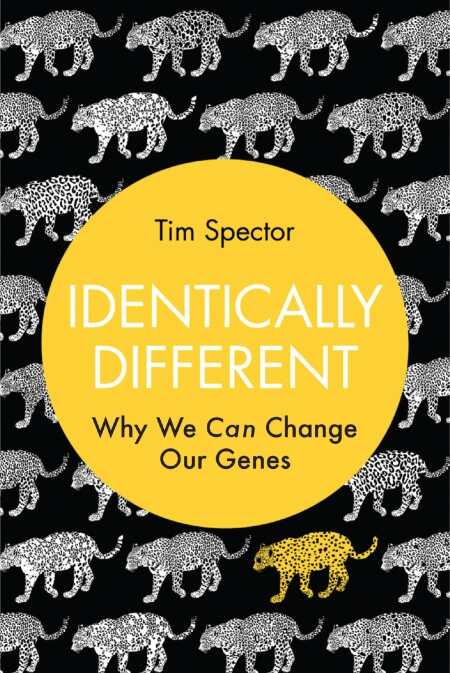Identically Different
Why We Can Change Our Genes
With British humor, this professor cites cutting-edge twin studies to investigate causes of differences.
The nature vs. nurture pendulum has swung toward genetic predetermination in recent years, with much-hyped searches for (and often, announcements of) gay genes, obesity genes, alcoholism genes, and more. Tim Spector’s book Identically Different looks to set the record straight by explaining science’s current understanding of the roles of environment, genetics, and a third hybrid factor, epigenetics.
Spector is about as well-qualified on these topics as any author could be—he’s a professor of genetic epidemiology who set up the TwinsUK register in 1995, which continues to provide valuable data on genetic heredity. He’s also been quoted often in the media and has appeared in television documentaries.
The title, Identically Different, mainly refers to Spector’s studies and numerous examples involving identical twins. The book is filled with fascinating, often mystifying, real-life cases of twins separated at birth who exhibit strikingly similar or dissimilar characteristics later in life, or twins raised in seemingly similar environments who differ radically as adults. In each case, Spector probes into the genetic and environmental causes of these differences.
Aside from bringing readers up to the cutting edge of scientific knowledge on these subjects, Spector does an excellent job explaining epigenetics (the influence of environment on genome modifications, and how and when genes are expressed). Here, too, Spector has amazing examples at hand, including illustrating how the diet of a mother can impact the health and physical makeup of not just her children but also her children’s children.
Epigenetics explains much of what’s missing in the genes vs. environment debate, but Spector carefully parses just how much is yet unknown. In a chapter discussing talent, he challenges the “genetics” argument that Kenyans and Ethiopians make better long-distance runners and suggests that motivation, not purely physical attributes, seems to be the primary factor in determining athletic and intellectual success. Then, in an admission to how complex these matters are, he concludes that “the key motivation factor is again likely to be a mix of genes and environment.” The book’s subtitle, Why We Can Change Our Genes, is clarified when Spector explains that not only is true genetic predetermination rare but that the choices we make today can indeed affect not just our own genes but those of future generations.
The book is broken into concise chapters with titles like “The happiness gene,” “The parenting gene,” and “The fat gene,” written with occasional bits of British humor that mostly hit the mark. Spector’s interesting examples may have readers noticing finger lengths (tied to testosterone exposure in the womb) and checking the plastic bottles they drink from (exposure to BPA, a chemical in many plastics, has been tied to a host of health problems). Identically Different cuts to the heart of what makes us the way we are.
Reviewed by
Peter Dabbene
Disclosure: This article is not an endorsement, but a review. The publisher of this book provided free copies of the book to have their book reviewed by a professional reviewer. No fee was paid by the publisher for this review. Foreword Reviews only recommends books that we love. Foreword Magazine, Inc. is disclosing this in accordance with the Federal Trade Commission’s 16 CFR, Part 255.

